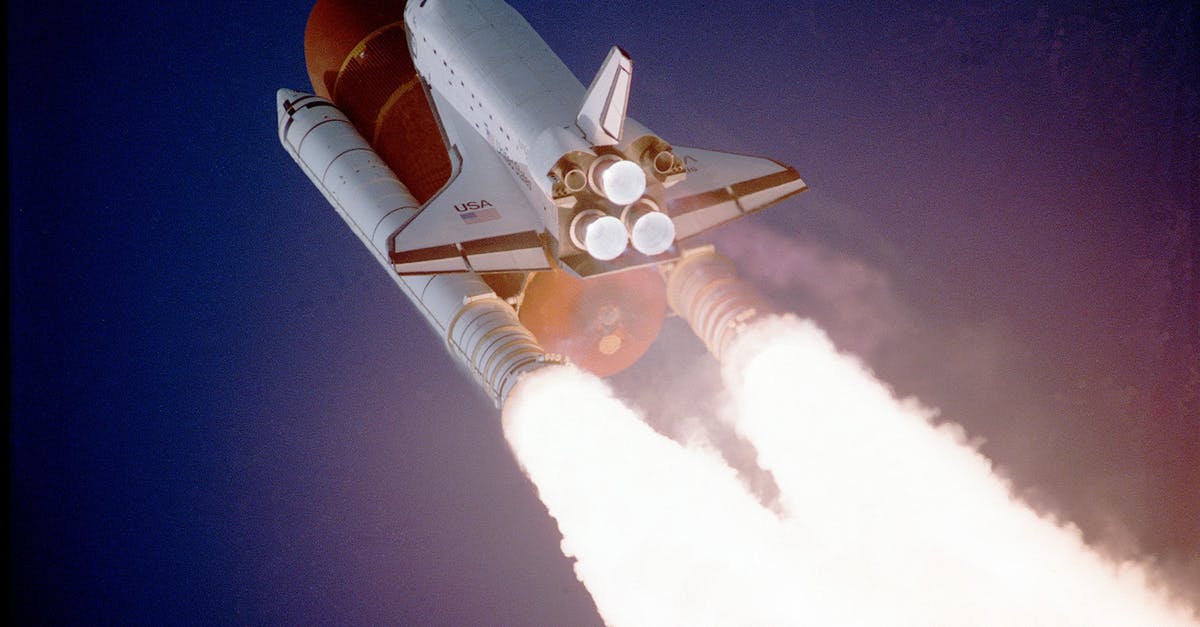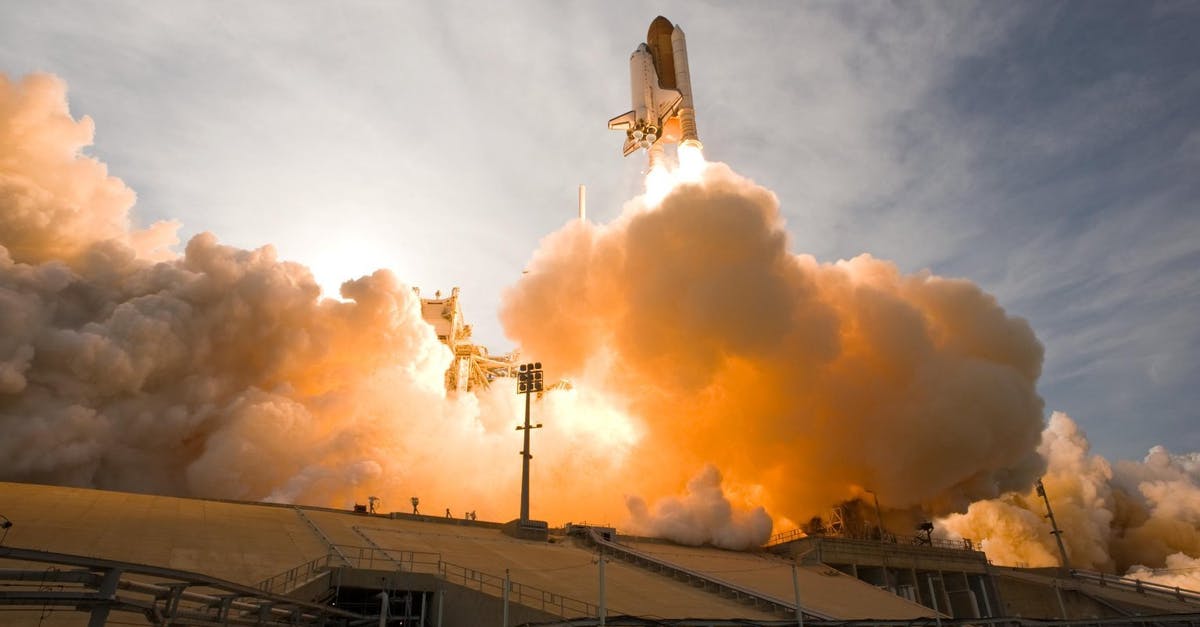Why did it take a rocket to lift off the Earth but just shuttles to lift off the other planets?

I remember gravity in both the planets in Interstellar being comparable to that of Earth's. 80% of Earth gravity in case of Mann's planet and 130% in case of Miller's planet. So, why did it take a rocket to lift off the Earth surface and get to the Endurance orbit, but just Ranger shuttles to lift off from Miller's & Mann's planet?
I do see an explanation here
But if that is the case, why use a rocket to lift off from earth?
Best Answer
The same question was also asked on Quora, with various interesting answers, even if it's hard to say which one is correct and they all sound quite plausible. Everyone seems to agree though, that both Lander and Ranger are very much capable of planetary lift-offs and could as well have left earth on their own. Remains the question why they chose a rocket-aided lift-off for earth. The most-compelling in-universe answers are:
- As Victor also says in his answer already, they might have to carry a lot more cargo and supplies for their initial trip to the Endurance in preparation of their long journey. For this the additional boost might be required.
- They might want to save fuel, which is made clear to be a very valuable resource. So why not rather waste a whole rocket on earth, where they could easily built and setup one and save the fuel for the, likely fuel-intensive, lift-offs for the planets where it's definitely needed.
Yet there is also a very good out-of-universe answer mentioned, which I'd like the most (since I appreciate analysis more than fan-fiction, but that's just me ;-)), even if it's probably to be seen in connection to the other explanations:
- The usage of a classical multi-stage rocket lift-off and its whole depiction in the movie pretty much evokes reminiscences of the good old space missions, especially the Apollo missions, we experienced in the past. And this is definitely intended, since it is that pioneering attitude of space exploration that Cooper complains to have gone astray in humanity's pessimistic society of "care-takers". And it is this hope and inspiration humanity took from those missions that the movie wants to recall with this depiction.
As a little addendum, after a fruitful discussion I indeed managed to get together a computation for the escape velocity on Miller's planet in an answer to a related question over on Physics.SE (similar to jld's computation in his answer here), giving that the planet has only about 96% of earth's escape velocity. So it is indeed a little bit easier to leave it than earth (and even more likely for Mann's planet, which following the computed constraints would have to have only more than 64% of earth's density to be easier to lift off). But I still stand to the above assumption, that they could also have left earth without a rocket, hadn't they had the additional cargo, fuel constraints and obligation to show us a good old rocket launch.
Pictures about "Why did it take a rocket to lift off the Earth but just shuttles to lift off the other planets?"



How Does A ROCKET FLY | How Do Rockets Work | ROCKET LAUNCH | The Dr Binocs Show | Peekaboo Kidz
More answers regarding why did it take a rocket to lift off the Earth but just shuttles to lift off the other planets?
Answer 2
This is what I imagined after watching the movie:
The shuttles could carry people and little (or no) cargo in and out of a planet's atmosphere, but a big rocket was needed to carry all the cargo needed for the long journey to Saturn and into the wormhole.
Answer 3
Okay, so several people have mentioned that the planet's density will have an effect on its escape velocity. This is true. The total mass of the planet is: M=(4?/3)R³?, where ? is its average density. The escape velocity squared is: v² = 2GM/R = (8?G/3)R²? = k²R²?, where I've defined k²=8?G/3. So we see that the equation for escape velocity, in terms of its radius and its density, is given by:
v = kR ?(?)
The acceleration due to gravity is given by g = GM/R²= (4?G/3)R? = (k²/2)R?
Kip Thorne gives an estimate for Miller's planet's average density: ~10,000 kg/m³, compared with Earth's value of ~5,500 kg/m³. Additionally, we know Miller's planet has 1.2 times the acceleration due to gravity on Earth: g?=1.2g?.
R? = 1.2R???/??
This gives us a radius of ~4200 km. The escape velocity can be obtained by plugging this into our first equation, giving us a value of of ~9930 m/s. This is about 90% of Earth's escape velocity, so indeed it is easier to take off from Miller's planet than Earth, however not by much.
Answer 4
There are two types of ships used with Endurance: the Ranger and the slightly larger Lander. If you go to the Endurance model site, it is stated that the lander can carry down entire modules of Endurance. So they could be used to bring up any amount of supplies from Earth. http://www.gannett-cdn.com/experiments/usatoday/2014/11/interstellar/interstellar.html
So the fuel/limited capacities explanations cannot be correct,unless....
All three ships Ranger, Lander and Endurance use some form of very powerful plasma thruster, that needs to be fed by a Tokomak fusion reactor. The fusion must be one of the aneutronic reactions (no neutrons), or else the ships would melt or require gigantic radiators, since neutrons are waste heat in fusion reactions. He3+Lithium is a good candidate for aneutronic fusion. But Helium3 is excessively rare and extremely expensive to produce. So that might be the answer. NASA can't afford to waste helium3 for routine work, so they use antiquated chemical rockets to launch from Earth, where chemicals are very cheap.
A spreadsheet with the numbers: http://bit.ly/1vlpaVD
Answer 5
Actually, the rocket launched TWO Rangers AND the docking sub-assembly between them while they are attached to the central hub of Endurance. During the first docking sequence, you can see the sub-assembly and the second Ranger attached to the bottom of the Ranger Cooper is flying.
So it's very likely that they couldn't lift all this with just a single flying Ranger and needed the rockets for that amount of cargo.
Answer 6
Best answer I've seen is here: It reframes the movie as a conspiracy by the Brands (and a few others like Mann) that is unwittingly foiled by Cooper. Brand has already developed his anti-gravity theory and equipped the shuttles with anti-gravity drives by the time Cooper leaves on the mission.
When they take off from Earth, they use a big rocket to reach orbit. Miller's planet has 1.1 times Earth's gravity, and they don't need any rockets at all, the shuttle is taking off on its own. The same happens on Mann's planet twice. That's only possible if they already have the anti-gravity drives installed and working.
Plan A was never an alternative, probably because if humans didn't have food on Earth they wouldn't have any in space either. And on top of that, all crops were infected on Earth with the Blight, so Brand wanted a fresh start.
Sources: Stack Exchange - This article follows the attribution requirements of Stack Exchange and is licensed under CC BY-SA 3.0.
Images: Pixabay, Pixabay, Kindel Media, Kindel Media
